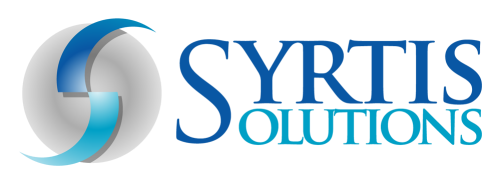
31 Oct THIRD-PARTY LIABILITY DIFFICULTIES IN MEDICAID
Third-party liability, also known as TPL, is the legal requirement of third parties to pay part or all of the costs for medical assistance under a Medicaid state plan. In other words, if a beneficiary has other forms of health insurance, those primary payers are mandated to pay their legal liability first, and Medicaid pays for any remaining liability as the payer of last resort. This policy has been in place since the Employee Retirement Income Security Act modified the Social Security Act in 1974. However, state Medicaid agencies face ongoing difficulties in meeting TPL requirements, and it is costing the program billions of dollars every year.
This October, the OIG posted an updated report that highlighted the particular difficulties states are dealing with in meeting third-party liability requirements and in ensuring that Medicaid functions as the payer of last resort. The OIG conducted its audit by sending surveys to State agency officials to identify how each state gathers OHI, detects TPL, processes claims with TPL, and reports TPL cost avoidance and recoveries. While there has been improvement, the OIG’s auditing efforts show that billions of dollars are still at risk. Here is a summary of the report’s findings and recommendations.
DIFFICULTIES THAT STATES FACE TO MEET TPL REQUIREMENTS
According to States, the main obstacles in their attempts to meet TPL requirements are related to:
- difficulties obtaining complete, accurate, and up-to-date coverage data from Medicaid enrollees and providers;
- difficulties obtaining timely and reliable coverage details from third parties;
- difficulties coordinating TPL with out-of-State third parties;
- technical issues related to third-party coverage information received and electronic billing of Medicaid claims with third parties;
- a lack of Federal prompt payment requirements and penalties for third parties that do not cooperate with States’ attempts to comply with TPL requirements;
- difficulties with third parties that reject Medicaid claims for procedural reasons;
- difficulties coordinating TPL with TRICARE and;
- difficulties coordinating TPL with Medicare.
OIG RECOMMENDATIONS TO ADDRESS THIRD-PARTY LIABILITY DIFFICULTIES
The OIG made the following recommendations to CMS to address TPL difficulties:
- use the information we obtained from States about the problems they are still encountering and develop an action plan for helping States more easily identify liable third parties and recover Medicaid payments;
- work with States, as appropriate, to encourage better cooperation from third parties that repeatedly resist States’ TPL identification and recovery efforts;
- for the four States we identified as not having fully complied with the DRA’s TPL provisions: (1) verify whether the States have since come into compliance and (2) pursue corrective actions for States that have not fully complied;
- verify whether Virginia has refunded the $1.25 million Federal share of the Medicaid TPL collections underreported during two fiscal quarters and, if not, require Virginia to refund any remaining amount owed;
- provide guidance to States to assist them with creating processes that improve the reporting of Medicaid TPL amounts on the form 64.9 A;
- ensure that States have current instructions on completing the form 64.9 A;
- ensure that States correctly report TPL amounts on the form 64.9 A; and
- remove or disable lines from the form 64.9 A that States are supposed to leave blank.
MEDICAID PAYERS NEED INNOVATIVE TPL DATA SOLUTIONS
States’ TPL problems emanate primarily from bad-quality data. Medicaid payers are not able to determine primary coverage on pharmacy and medical claims because the majority of data that they have access to is not current, available, complete, or accurate. Because of this, Medicaid plans have no choice but to pay claims in error and then chase reimbursement once other primary coverage is identified. To make matters worse, the actual monies recovered from these improper payments remain around twenty cents on the dollar.
Without high quality data, Medicaid will not have the ability to solve its TPL challenges, and the program will continue to lose billions in improper payments. Syrtis Solutions understood this, and in 2010, they introduced ProTPL. Their solution is a real-time point-of-sale cost avoidance service for payers of last resort that provides powerful and accurate eligibility data that plans can act upon. ProTPL gives payers of last resort the ability to cost avoid pharmacy and medical claims in addition to the associated costs of recovery. Syrtis Solutions identifies active health coverage that no other vendors can find by checking claims against the nation’s largest and most complete active healthcare coverage information database. Customers implementing ProTPL see an average twenty-five percent increase in OHI discovery. With ProTPL, Medicaid plans can save on claims that are the liability of other primary payers and effectively be the payer of last resort.
In July, Medicaid enrollment increased to 84.5 million people. Because of the size of the program’s population, Medicaid plans need to focus on innovative ways of identifying third-party liability, improving efficiency, and lowering costs. Presently, one of the best ways for Medicaid payers to do that is to adopt technology solutions like ProTPL, which will allow them to identify active third-party payers and satisfy TPL requirements.
Click this link to continue reading.
